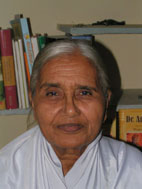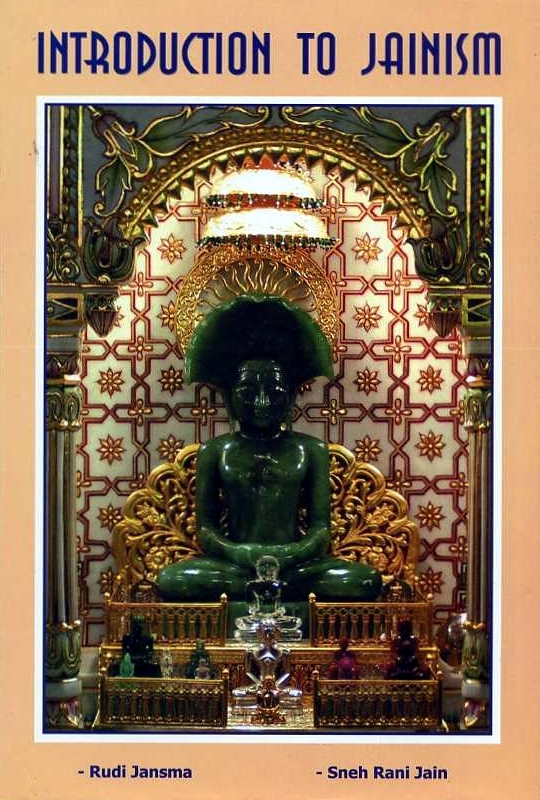Those who live in the heavenly realms are in possession of all five senses and a mind. They are called Vaimanikas because they have a vimāna - a heavenly vehicle, airplane or flying palace. Such flying palaces are of celestial beauty, richly adorned with jewels, and sometimes as big as whole cities. All of them have been humans in the Middle World and will again be humans in the future. In general we may say that in an “upward direction” their age, capacities, joy, radiance, purity and thought-color (leśya), sensory powers and visual knowledge ever increase, and that their attachment to the world and their pride decrease. But even the most advanced remain attached to the guru they had during their earthly existence. High heavenly beings may still feel a loving connection with their family left on earth when they physically passed away.[70] All these heavenly beings are we ourselves - after our physical death - depending on our spiritual advancement. Some of them, who have already passed through an intensive spiritual self-training, need to be born as humans only once more, and then, through penitence, they will reach final liberation. Others, who at present live in the highest heavens, need only two more human lives. The human kingdom is the only gate to nirvāna.
The inhabitants of the lower heavens still enjoy pleasures in their consciousness which are akin to the human, but become of an ever more subtle nature, and less “intense.” They express their sexuality, for example, in an ever nobler way. In the lowermost heavens they still do so in the same way as humans, but above this stage only through touch, in the next heaven only through seeing, and finally only mentally (by remembering or hearing). In the high heavens sensual desires no longer exist. The state of consciousness is of course more important than outer form or color, but the descriptions of their outward appearances as given to us in literature are symbols - reflections - of their inner state. Their bodies, consisting of subtle matter, reflect the condition of their soul; they are far less rigid and inconstant than the physical body. Perhaps those who have developed an eye fit for that purpose and are pure and well trained against illusions can properly perceive them in these forms and colors.
Those who live in the kalpa heavens (the lower 16 (or 12) heavens), like those in the lowest heavens, are organized in a hierarchical “social” structure. Their leader or king is an Indra, then follow gurus, priests, courtiers, bodyguards, protectors (“police”) of the four directions, the “populace”, those who can turn themselves into riding or flying animals to carry the higher divinities, and finally servants.
Elevated above those who abide in the 16 (or 12) kalpa heavens are those who are born in the higher heavens. Among them are 24 classes of laukantikas, those who have reached their goal within the universe. They are equal in status, i.e. without hierarchical differences, and they are all connected with each other. They know no more sexual desires or other passions. They need at the most two more human incarnations to reach liberation. If ever these elevated human souls descend to the Middle World, it is only to pay homage to incarnated Tīrthamkaras at important crossroads in their lives - for example the moment they decide to renounce the world. Time does not exist in the heavens, because they are situated above the Jyotishka, the heavenly bodies which rule the time divisions. All heavens seem to be the result of the spiritual development of the individual and his measure of control over the lower aspects of his psychological constitution during life on earth. The heavens and hells are regions of consequences, whereas our earth is called by the Indians a “work planet“ (karmabhūmi), the region of causes, because it is only on earth that one can consciously choose to do good (or bad) works, physically, verbally, and mentally.
Those who have left all worlds behind and live in siddhaloka are omniscient in the universe, are freed of all karmas, and have left behind ultimately and for ever their human bodies, and radiate as pure and freed souls. The characteristics of their (and our) pure soul are: knowledge, spiritual insight, bliss, power, right faith, right conduct, imperturbability and freedom from all limitations in the universe.
But they can never “come down” to those on earth (until their next incarnation). Their love is of a very high and subtle nature without any personal attachment, and may be perceived only by the superconscious aspects within men and women on earth - were real help and protection may be given. It has nothing whatsoever to do with the experiences of spiritism.
 Dr. Sneh Rani Jain
Dr. Sneh Rani Jain
 Publisher:
Publisher: